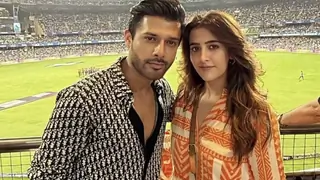This is a reprint of the article that appeared under Culture in Chandamama, U.S. and Canada Edition
Ram S. Sriram
I often travel within U.S. and Canada to accompany visiting Carnatic musicians on the mirudangam or to speak at universities about Indian music. A question that is frequently asked during these visits, not only by Westerners but also by people of Indian-origin is, "Is Indian music, religious music?" My answer is: Yes and No.
The word 'religion' can be interpreted in many ways. If we interpret 'religion' to mean the faith, practices and biases of a specific community, then no, Indian music is not religious music. If we interpret 'religion' to mean a path that guides us to universal values - values that help us rise above prejudices and limitations and realize the true purpose of our lives - then yes, Indian music is religious music. Yeats, the famous Irish poet, says that while it is complex in theory and practice, Indian music is not just an art but description of life itself.
Indian classical music is one of the oldest, if not the oldest music system, in the world. As early as 400 B. C., classical music systems began to develop in India. The Vedas, written thousands of years ago provide the earliest reference to Indian music. One of the ritual elements of the Vedas is the chant. The chants are musical expositions and are used for individual and group recitation of mantras. Epic stories such as the Ramayana and the Mahabharatha, the Buddhist scriptures and the Brahminical literature also provide references to music and musicians. Similar references to the development of music can be found in the medieval and modern literatures. Further analysis of this literature shows that while the compositions frequently used religious and mythological anecdotes, music, as an art, had developed independently of the Hindu religions. Music was not treated as an integral part of the religious rituals but as a separate cultured and aesthetic activity. In other words, in India, music was always considered a secular art.
If Indian music is indeed a secular art, then why does it contain so many mythological and religious references? Music, like any other art form, is created by people and is an expression of their lives and culture. For thousands of years, the heroes and villains of mythology were household names in India. The legends and tales of these heroes and villains filled Indian households and even today, they are featured prominently in films, magazines and comic books. The stories have created larger-than-life images of these characters and produced reverence and awe in the minds of children and adults alike. Therefore, it is no surprise that, to the Indian poets and composers, the mythological stories and the players from these stories were a never-ending source to decorate and embellish the music. Although the composers viewed music as a divine activity, they did not use these stories as an excuse to promote their personal agenda or publicize religious faith or orchestrated rituals. In their view, music is a powerful tool and it must be used to affect social change -- to convey important social messages and the central truths of human existence.
The twin belief that music is a divine activity and music can be used to trigger social change - encouraged these poets and composers to draw examples from Hindu mythology. The composers believed that using mythology and religion as a background would be an effective way to convey the sublime messages of wisdom put forth by visionaries throughout the ages. People can identify with the mythological and religious stories that they grew up hearing. Thus, with the addition of music to the description of gods and goddesses and their lives, the listener can be transported from the ordinary world to a higher spiritual and moral world. We can find support for these notions in thousands of compositions written by hundreds of composers. However, I will cite from the work of one of the best-known music composers of Indian music, Saint Thyagaraja.
Saint Thyagaraja lived in Tiruvayar, a small hamlet on the banks of the river Cauvery in Tamilnadu. Thyagaraja was born in a society that was divided by caste. The people from his community followed the religious rituals meticulously but ignored the inner wisdom and meaning of these rituals. Thyagaraja, a revolutionary, decided that he should use his compositions to highlight the society's ills and point to values and conduct necessary to overcome these ills. Drawing frequently from the Ramayana and its hero, Rama (an incarnation of Vishnu), Thyagaraja illustrated the importance of ethical and moral conduct in several of his compositions. He described Rama's life and how Rama accepted misery with fortitude and never swerved from the righteous path. Although Thyagaraja worshipped Rama and used Rama as the principal character in most of his compositions, he never promoted Rama as the only god or his religious beliefs as the only path to salvation. On the contrary, he advises us against using our religion or beliefs to discriminate against people of different faiths. In the words of Thyagaraja, God does not care whether you are an Advaitist or a Dwaitist (followers of the two major Hindu philosophies). For the truly liberated, labels and names make no difference. A truly religious person is one who transcends divisions and denominations (in other words, it does not matter whether you are a Hindu, a Christian, or a Muslim).
Thyagaraja's compositions also contain messages about every day life and its activities. He claims that the purpose of education should not be to earn money or to publicize one's accomplishments. Education should be used to mold ones character and knowledge must be used to benefit ones society. A donkey or a mule that carries a load of books on its back does not become a scholar. Likewise, Thyagaraja also criticizes blind adherence to religious rites without understanding the true meaning behind these rituals. He says rituals for rituals' sake is useless; one must strive to use the ritualistic practices to develop mental discipline. "What is the purpose in doing pooja by ringing a bell, burning camphor, and sitting cross legged, if all the while your mind is racing and thinking of money, wealth, and power?" The birds and the fish bathe in water several times a day. Does that make them spiritually liberated? The Stork and the Crane stand on the banks of the river on one leg. Does that mean they are doing penance and praying? They too are following their own rituals but cannot claim spiritual enlightenment from this alone. The religious rituals are vital to our lives. But, like the stork and the crane, the rituals should not be used to obtain immediate gratification but should be used to cleanse ourselves physically and mentally.
On personal responsibilities, Thyagaraja says that we are responsible for our actions. "No one else is responsible but I for my happiness and sorrow." There is no point in asking an external God to save us from internal misery. Inside each of us there resides a God and a Devil. Poets and philosophers from other cultures also emphasize this view. Schopenhauer, the German philosopher, says, "If you are looking for God outside of yourself you are wasting your time." Jalaludhin Rumi, the Iranian poet, says, "If you want to see the devil, look into the mirror." But the interplay between the devil and God within ourselves is the age-old drama that makes us either strive for personal greatness or succumb to the pursuit of worldly possessions. This interplay is also reinforced by Thyagaraja's message. The religious anecdotes and references are only a means to an end. The ultimate objective is examining our society, our lives, and our environment and improving our surroundings. Religious stories merely dramatize these messages and help the listener in relating to the true meaning of what is being said. Thus I conclude that using examples from religion and mythology do not make the songs religious music. The illustrative tools are simply one more component within the system of music that complement the other components such as notes, rhythm, and the grammar - all of which are essential to support the edifice of music.























